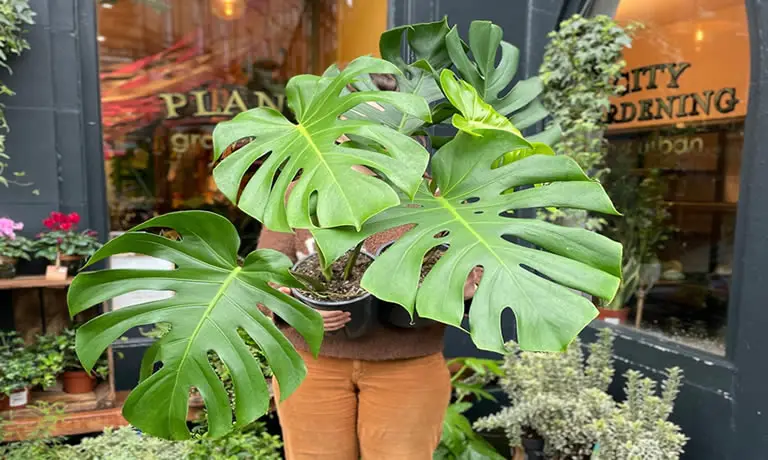The Monstera Deliciosa, also known as the Swiss Cheese Plant, is one of the most recognizable and rewarding houseplants you can grow. With its large, glossy leaves and dramatic fenestrations, it brings a bold, tropical vibe into any room. It grows fast, climbs enthusiastically, and asks for surprisingly little once you understand its rhythm.
Here’s how to keep your Monstera Deliciosa healthy, thriving, and full of those signature splits.
Table of Contents
- Light Needs: Bright and Indirect Is Best
- Watering Routine: Deep and Infrequent
- Temperature and Humidity: Warm and Moist Conditions Work Best
- Fertilizer: Boosting Leaf Size and Growth
- Repotting: Give It Room to Grow
- Pruning and Training: Shaping and Supporting Your Plant
- Best Spot in the Home: Where Monstera Looks and Feels Its Best
- Outdoor Care: Growing Monstera on the Patio or in the Garden
- Common Problems and Fixes
- Final Thoughts
Light Needs: Bright and Indirect Is Best
Monstera Deliciosa loves bright, indirect light.
A spot near a window with filtered light is ideal.
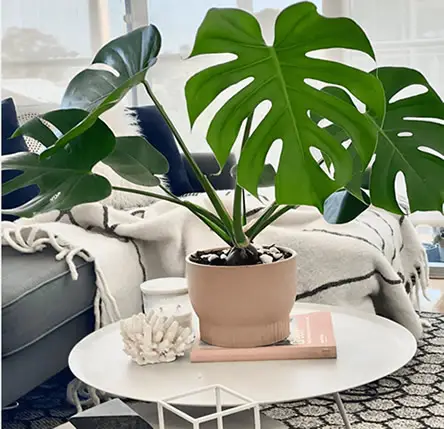
Too much direct sun can scorch the leaves, while too little light may result in small, solid leaves with no splits.
If your Monstera isn’t developing fenestrations, lighting is usually the first thing to adjust.
Watering Routine: Deep and Infrequent
Water your Monstera when the top 2 inches of soil feel dry.
Soak the soil thoroughly, then let excess water drain completely.
Don’t let the plant sit in water, and don’t water again until the soil has dried slightly.
Overwatering is a common issue, especially in cooler months.
Temperature and Humidity: Warm and Moist Conditions Work Best
Monsteras grow best between 65°F and 85°F and don’t like cold drafts or dry air.
They love humidity, so if your home is dry, try misting the leaves, placing a humidifier nearby, or grouping it with other tropical plants to create a humid microclimate.
Fertilizer: Boosting Leaf Size and Growth
Feed every 4–6 weeks during spring and summer with a balanced liquid fertilizer.
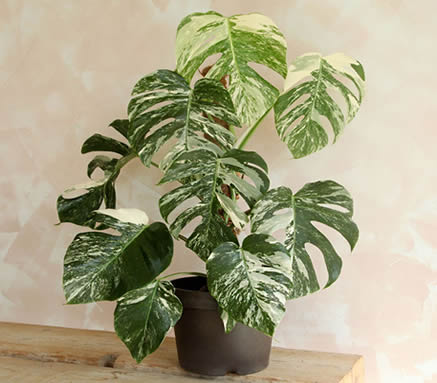
Look for a formula with an NPK ratio of 20-20-20, like this one, or 10-10-10, like this one, diluted to half strength.
Monsteras are moderate feeders, and regular fertilizing helps support their large foliage and fast growth.
Skip feeding in fall and winter when the plant slows down.
Repotting: Give It Room to Grow
Repot your Monstera every 1–2 years or when you see roots circling the bottom of the pot.
Choose a pot just one size larger with plenty of drainage holes.
Use a chunky, well-draining mix—something like potting soil with added bark, perlite, and coco coir for airflow and moisture balance.
Pruning and Training: Shaping and Supporting Your Plant
Prune to control the size and shape or to remove yellow or damaged leaves.
You can also trim back leggy vines to encourage fuller growth.
Use clean, sharp shears and cut just above a node.
As Monsteras mature, they’ll want to climb.
Add a moss pole or stake to help support their natural upward growth.
Best Spot in the Home: Where Monstera Looks and Feels Its Best
Monsteras are perfect for living rooms, home offices, or bedrooms with bright, indirect light and space for them to spread out.
Their large leaves make a statement, so give them room to breathe and show off.
Avoid squeezing them into low corners or dark hallways.
Outdoor Care: Growing Monstera on the Patio or in the Garden
In warm, humid climates (zones 10–12), Monstera Deliciosa can be grown outdoors year-round as a tropical landscape plant.
It thrives in dappled shade under trees, on covered patios, or beside bright, filtered windows where it’s protected from harsh direct sun.
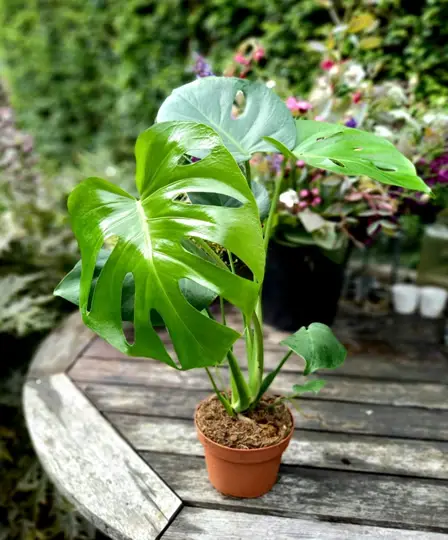
Too much sun can scorch its leaves, especially in the afternoon.
If you live in a cooler climate, you can move your Monstera outdoors during the summer months once nighttime temperatures stay consistently above 60°F.
Place it in a shaded, sheltered spot and water more frequently, as containers dry out faster outdoors.
Always check the soil before watering, just like you would indoors.
Before bringing it back inside in the fall, rinse off the leaves and inspect carefully for pests.
Acclimate it slowly to indoor light conditions again to avoid shock.
Common Problems and Fixes
Yellow leaves are usually a sign of overwatering or poor drainage
Fix it by checking that the pot drains well and letting the soil dry more between waterings
Leaves without splits may mean the plant isn’t getting enough light or is still too young
Fix it by moving the Monstera to a brighter location and waiting patiently—fenestrations increase with age
Brown leaf tips often result from dry air or inconsistent watering
Fix it by raising humidity levels and sticking to a more regular watering schedule
Droopy leaves can happen from underwatering, overwatering, or transplant shock
Fix it by checking the soil moisture and adjusting care based on how dry or soggy it feels
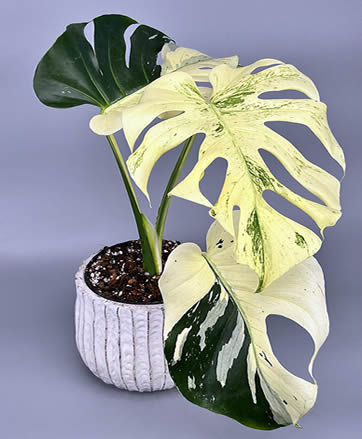
Aerial roots spilling out of the pot are normal for mature Monsteras
Fix it by letting them grow, tucking them into a moss pole, or trimming them if they get unruly
Pests like spider mites or thrips sometimes show up on dusty or dry leaves
Fix it by wiping the leaves regularly and treating infestations with neem oil or insecticidal soap
Final Thoughts
Monstera Deliciosa is bold, beautiful, and full of personality. It grows fast, climbs high, and adds a touch of wildness to any room it lives in.
With the right balance of light, water, and space to stretch, it will reward you with stunning, split-leaf foliage that makes your space feel alive.
Once you get the hang of it, this plant becomes one of the easiest and most satisfying to care for.
You may be interested in our article Monstera Deliciosa Propagation: How to Multiply the Magic of Your Swiss Cheese Plant that shows you how to expand your collection of these evergreens from just one plant.

